I grew up in Willowdale near a ravine and a nameless creek that flowed into the Don River. I played in that ravine. Pheasants flew out of it and strutted through my back yard. Weird shit happened down there, too. A playmate broke his arm in the ravine. I remember, as a seven-year-old, watching a work crew cut up a wrecked VW beetle that lay in the water at the foot of a cliff. I assumed there had been a body, too, maybe the driver, or somebody murdered and stuffed in the trunk. Why else would there be a wrecked car in the creek? The cliff abutted one side of a cul-de-sac. One summer, a rabid skunk climbed out of the ravine and bit a boy who lived on the cul-de-sac. I heard that he died.
As an adult, I moved further into the city, near a different ravine with a different creek that also flows into the Don River. As long as I live in Toronto, I don’t think I’ll ever climb out of its ravines.

In her 2010 book, Imagining Toronto, Amy Lavender Harris produces a literary “roadmap” of the city. In a section titled “The City as Text”, she offers an extended reflection on Toronto’s ravines. She opens by noting that ravines are Toronto’s most prominent geological feature: “From the air Toronto appears flat, a city rising almost imperceptibly above the impassive mirrored surface of Lake Ontario. At closer proximity, however, Toronto reveals itself to be a city of inverted mountains … ” In an accompanying footnote, she shares the claim by geologist Nick Eyles that Toronto ravines “provide one of the best geological records of the last 135,000 years in North America.”
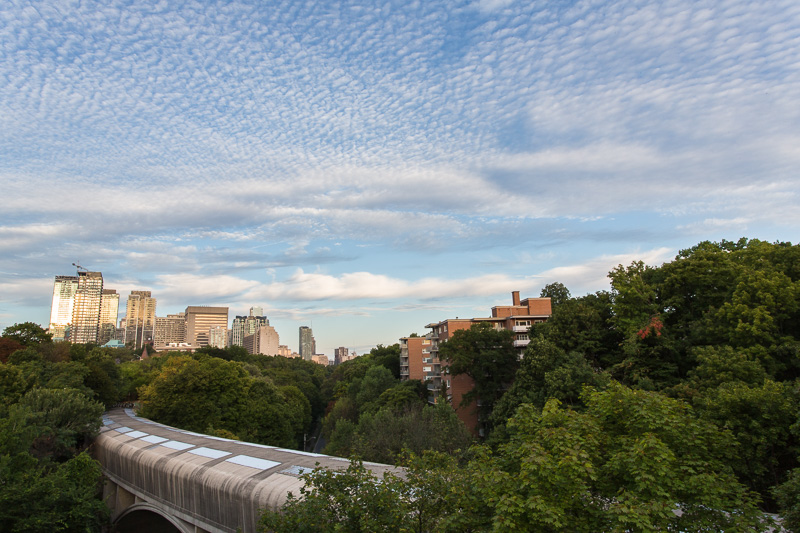
Harris is less concerned with the physical than the imaginative. Turning from topography, she writes: “[The ravines] are the repository of the city’s memory and the symbolic seat of its conscience, a tangled warren of nightmares and desires played out in subterranean shadow. Descending into the ravines is like touring the urban subconscious, a labyrinth of the city’s secrets exposed to sudden view.” Revisiting my childhood, I’m reminded of the friend who told me he had seen a man exposing himself in the ravine. That night, his mother called my mother and I was promptly forbidden from playing in the ravine. There were perverts on the loose down there. I have always assumed that my friend had simply stumbled on a man relieving himself behind a tree. The kid loved to tell tall tales, so it was easy for me to see how peeing could be elevated to perversion. But there’s no arguing with unsubstantiated fear and there’s no better place to incubate it than in a ravine.
Even so, there’s natural beauty in our ravines.
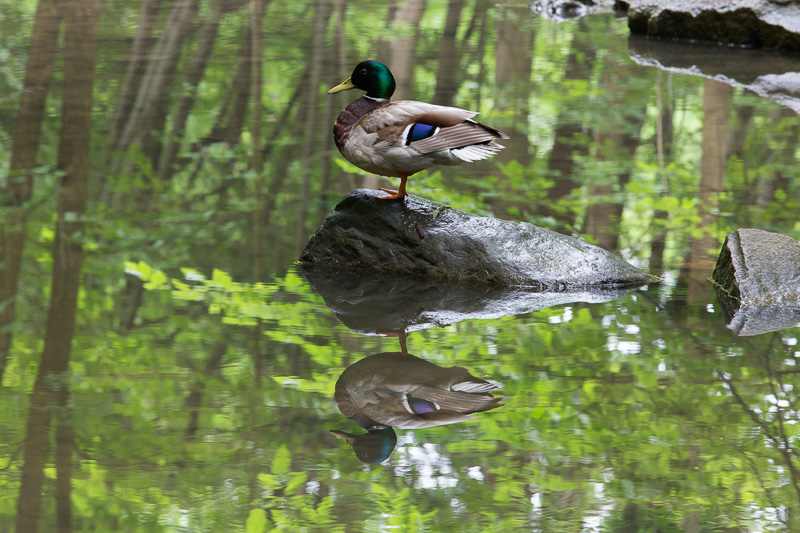
There’s unnatural beauty too.
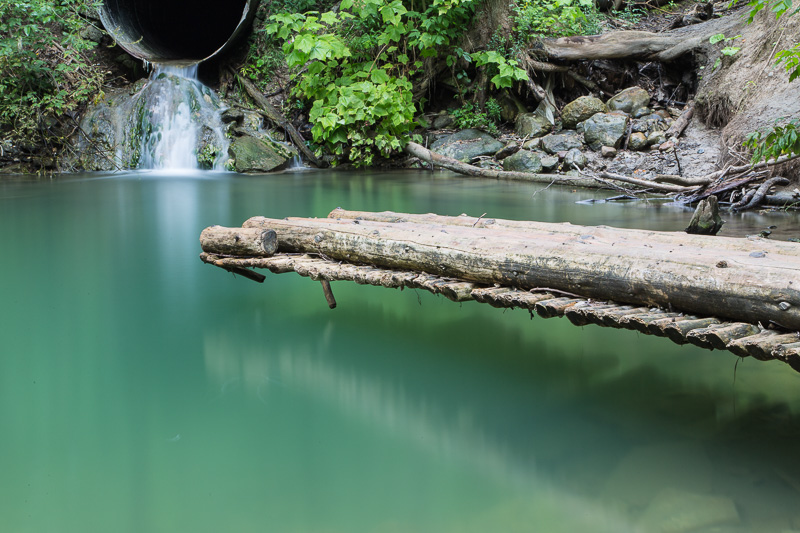
Beauty aside, local literature invokes Toronto’s ravines as a shorthand for all our ugly fears. Harris cites numerous instances but I’ll restrict myself to a couple of Toronto literary heavyweights. The first is Margaret Atwood, whose novel, The Blind Assassin, opens with a car careering over the St. Clair viaduct and into the Vale of Avoca. The car’s imagined site of impact would have been roughly as shown below. A culvert has broken and tumbled into Yellow Creek. “Vale of Avoca” sounds so poetic, but the truth of the matter is a hard landing.
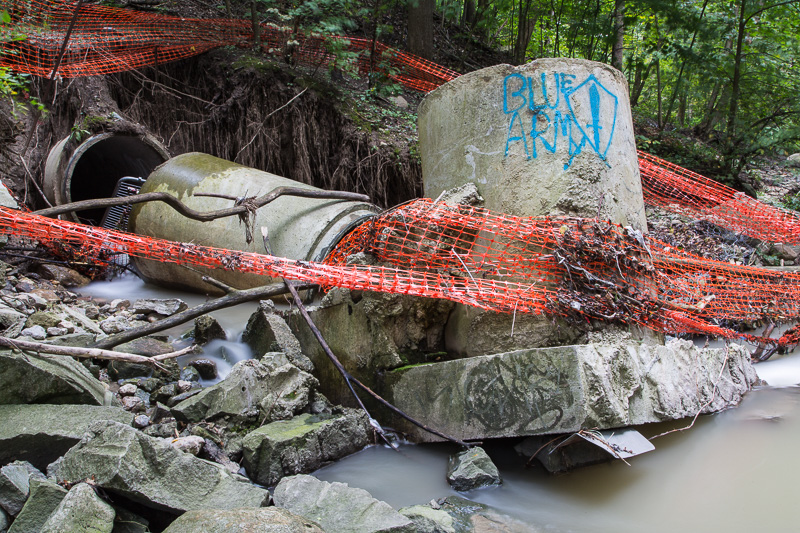
The second example comes from Timothy Findley’s Headhunter. The wife meanders into the ravine beneath the Glen Street bridge (which I have documented here), and before you can say “Oh shit, I should’ve brought my dog and a can of mace”, she’s screaming her head off. The body is recovered on short order.
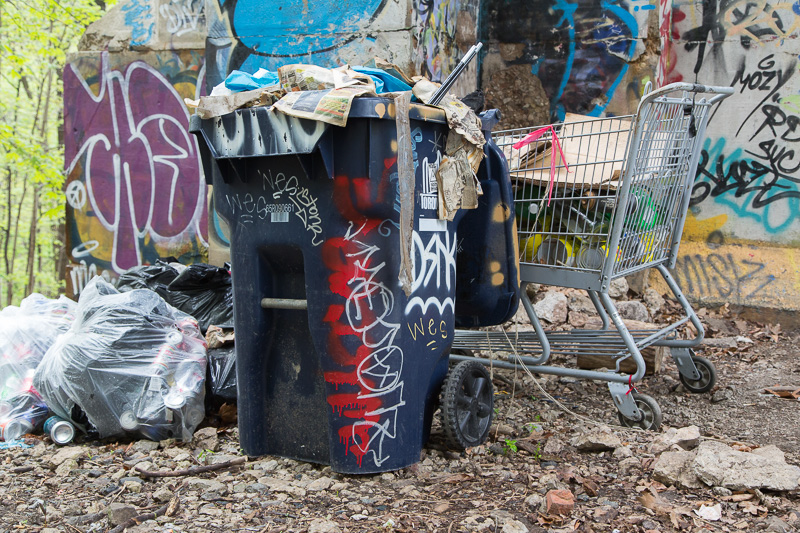
Literature doesn’t give us the only way to think about ravines. We can also look at them through the lens of class. The broad streets of Toronto The Good enjoy a middle-class respectability. But descend into the darker paths below the streets and Toronto The Good gives way to Toronto The Homeless, Toronto The Mentally Ill, Toronto The Marginalized. The ravines aren’t really a symbolic civic subconscious; we who walk the respectable streets are quite deliberate in the way we thrust the ravines out of our awareness. It would disrupt our middle-class sensibilities to always live in awareness of the life rooting beneath our feet. Look again at the photos posted here. The view from above is far more pleasant. Even if we could peer into the ravines from above, the unpleasantness would appear so small that we could safely ignore it. Only when we move down underneath the bridges and walk along the river beds do we see the details stripped of their symbolic gloss.